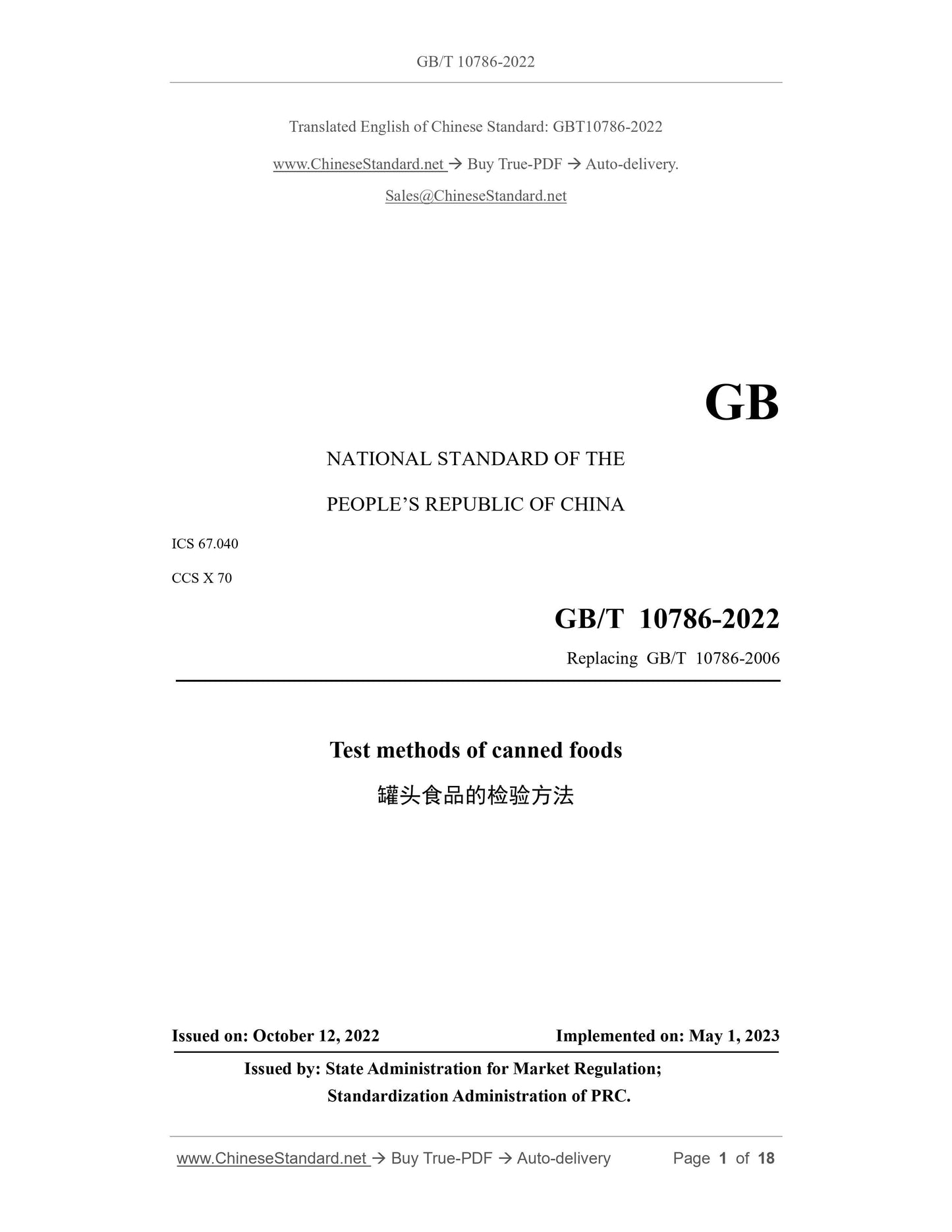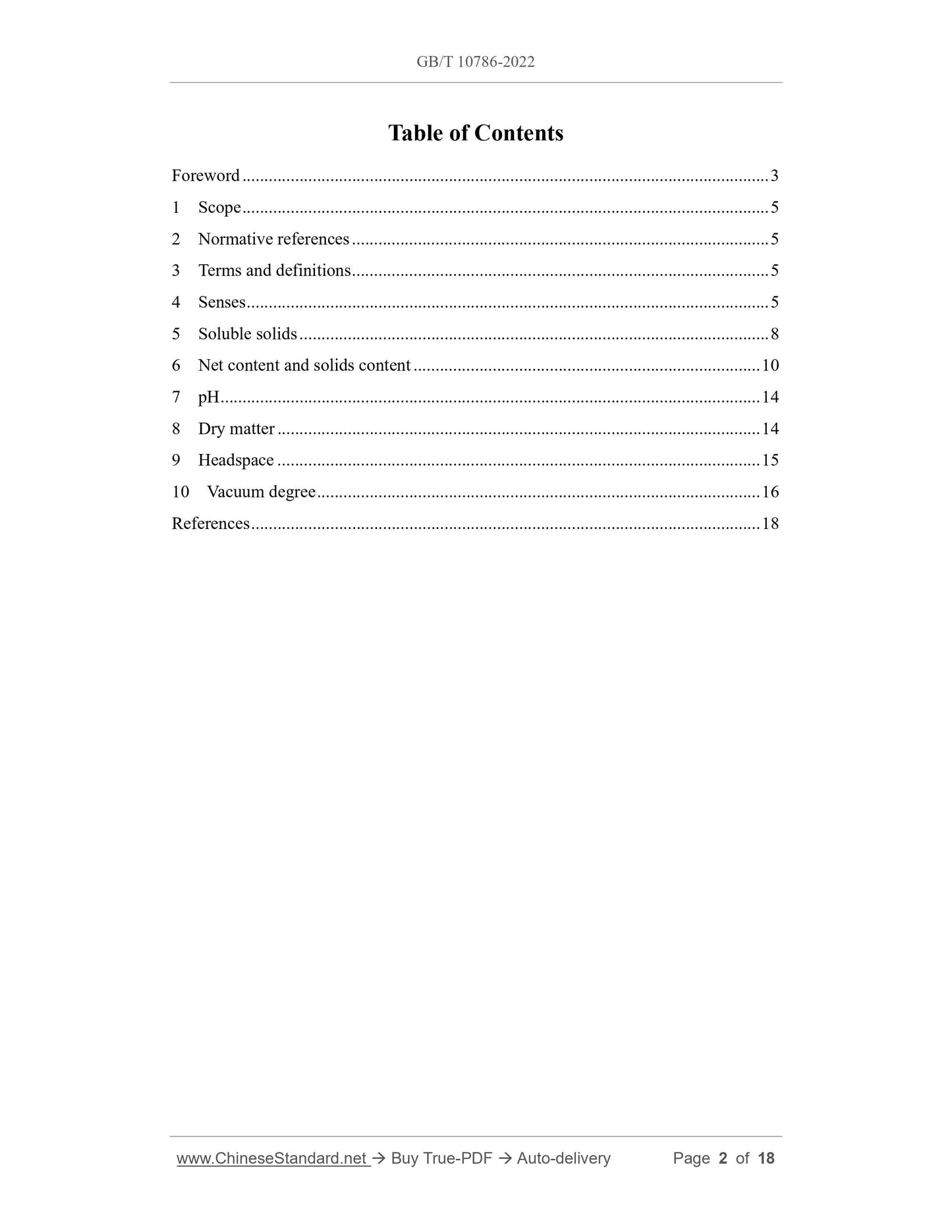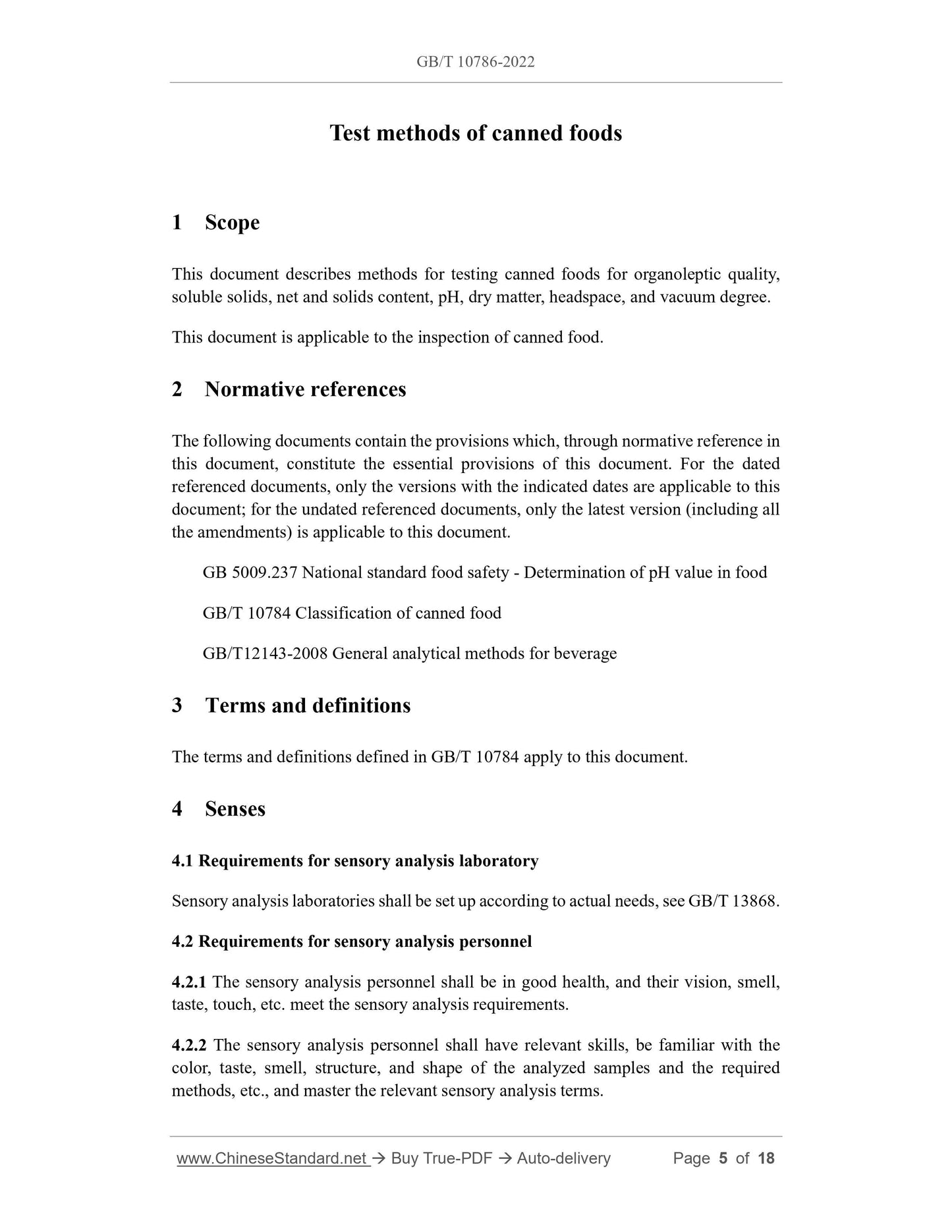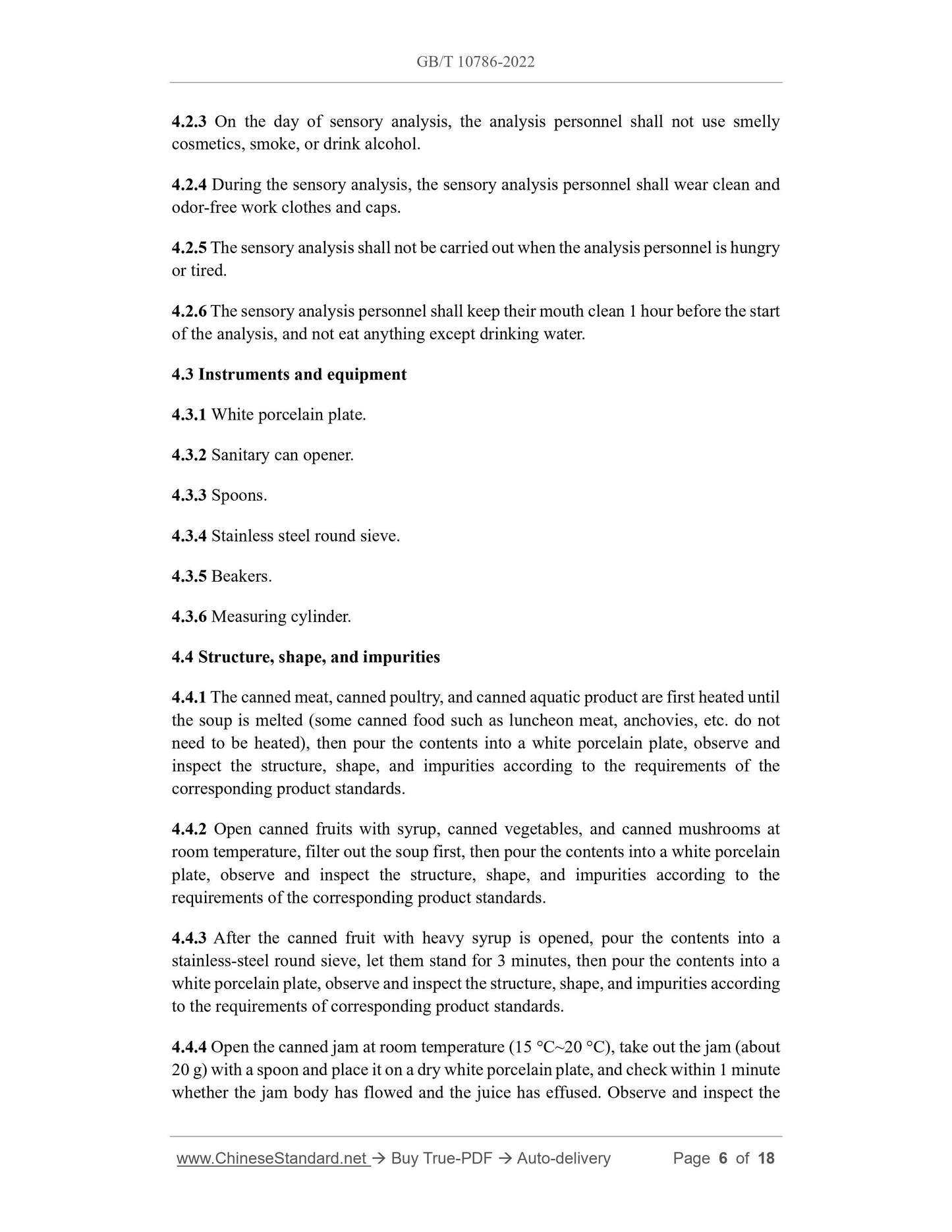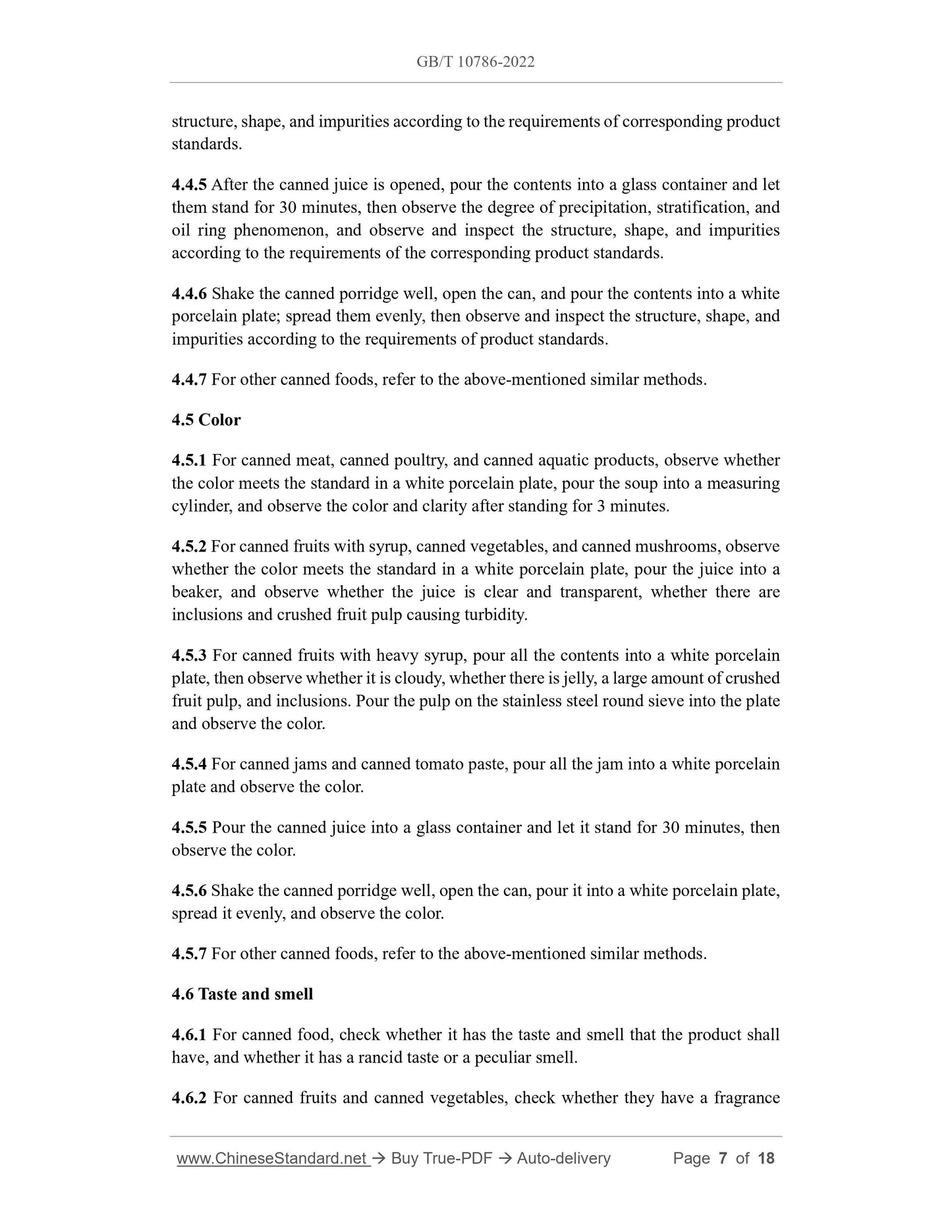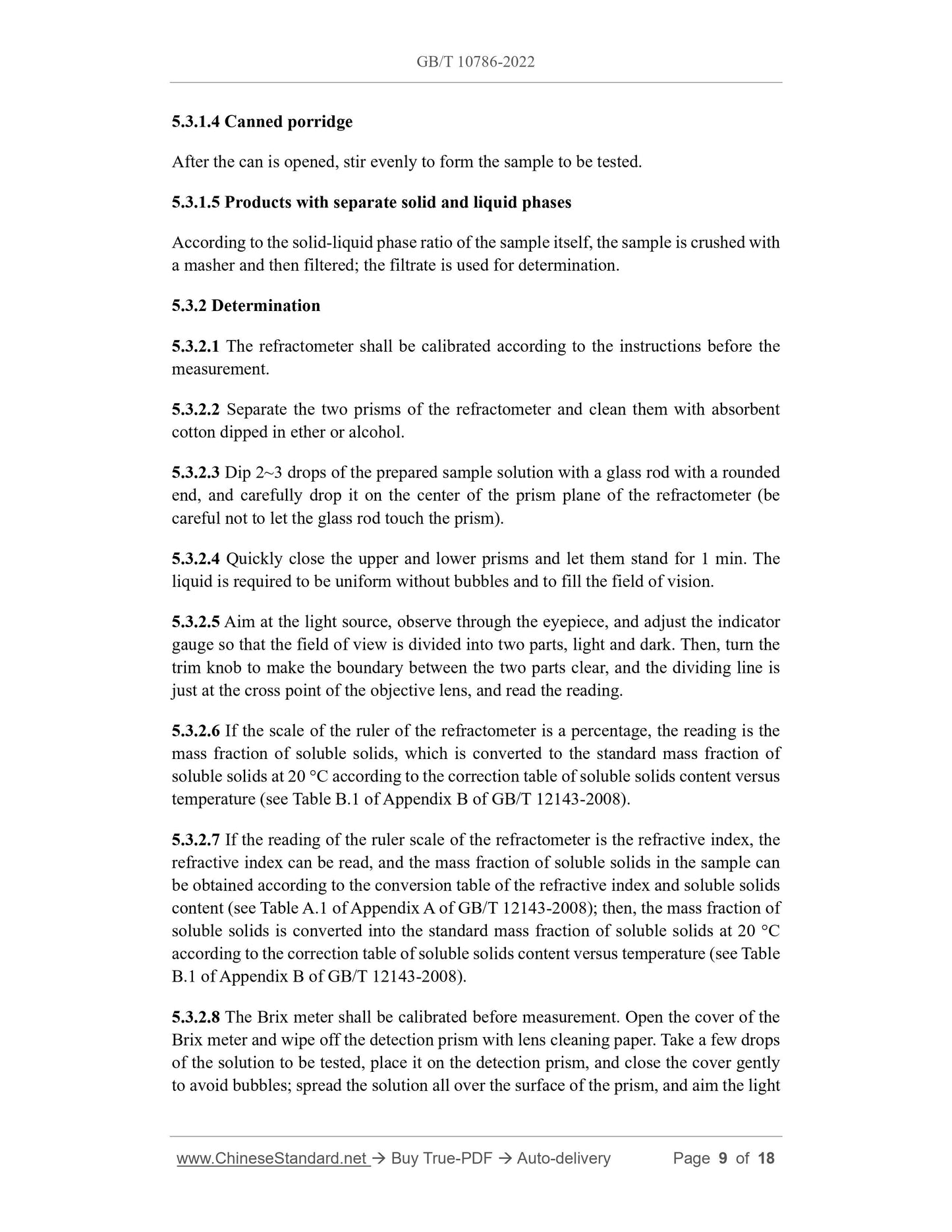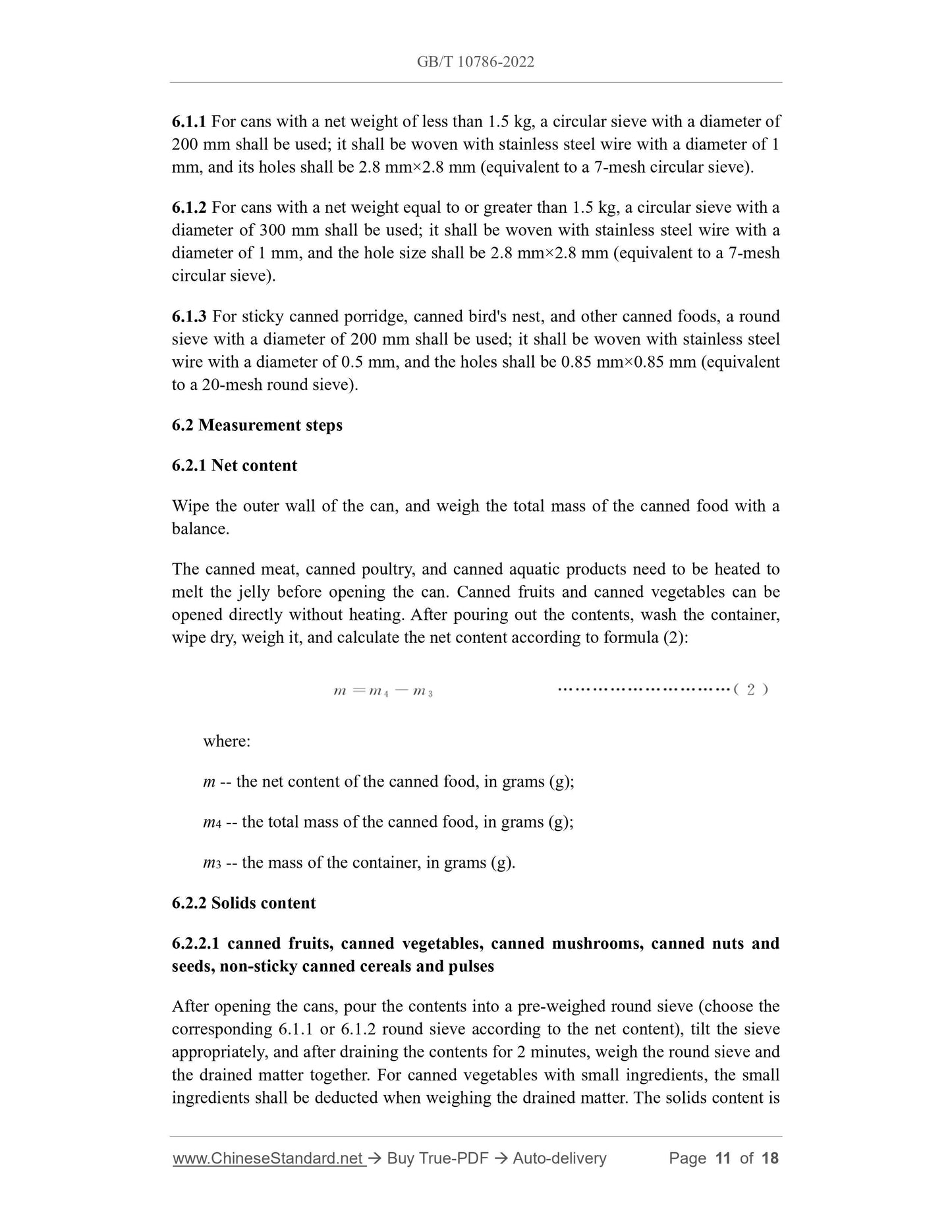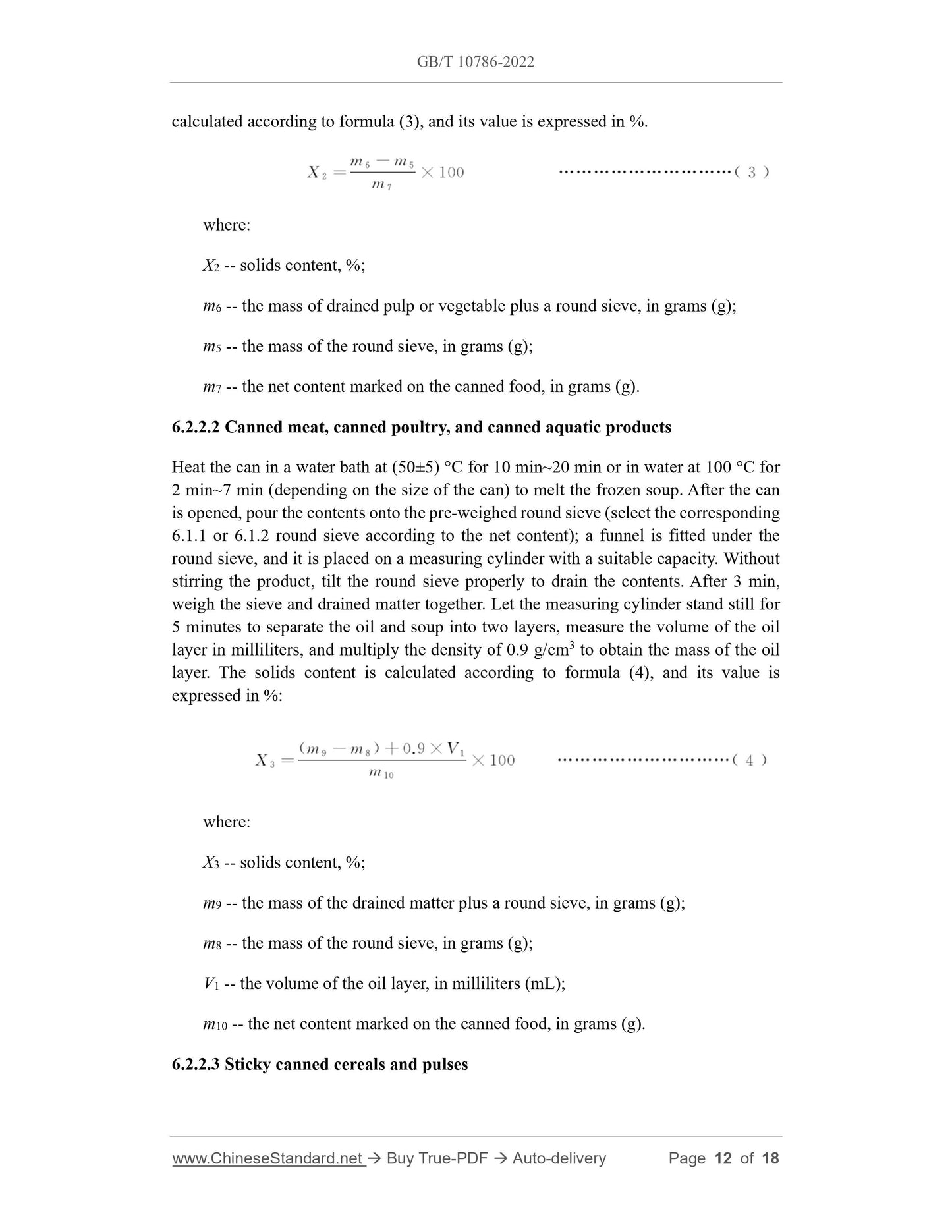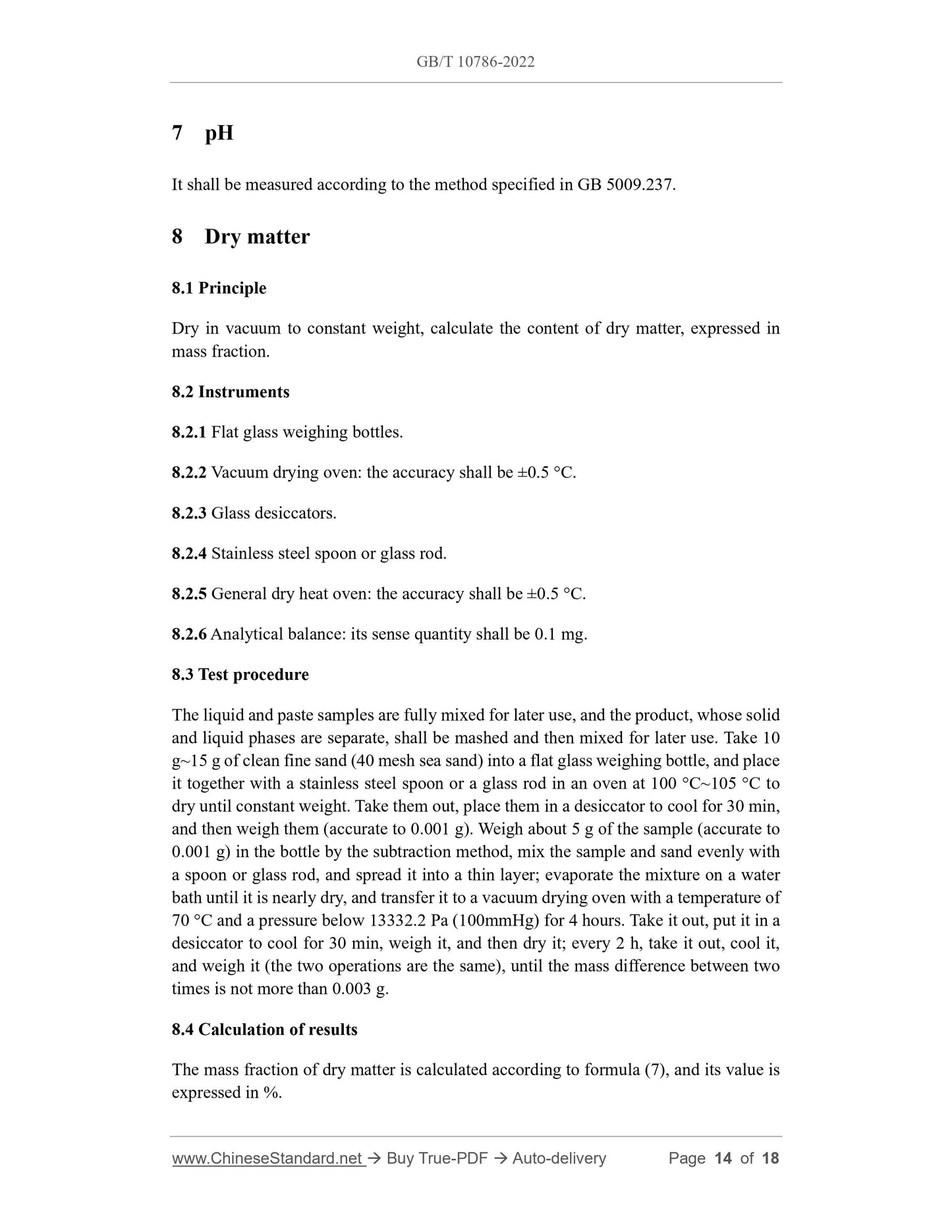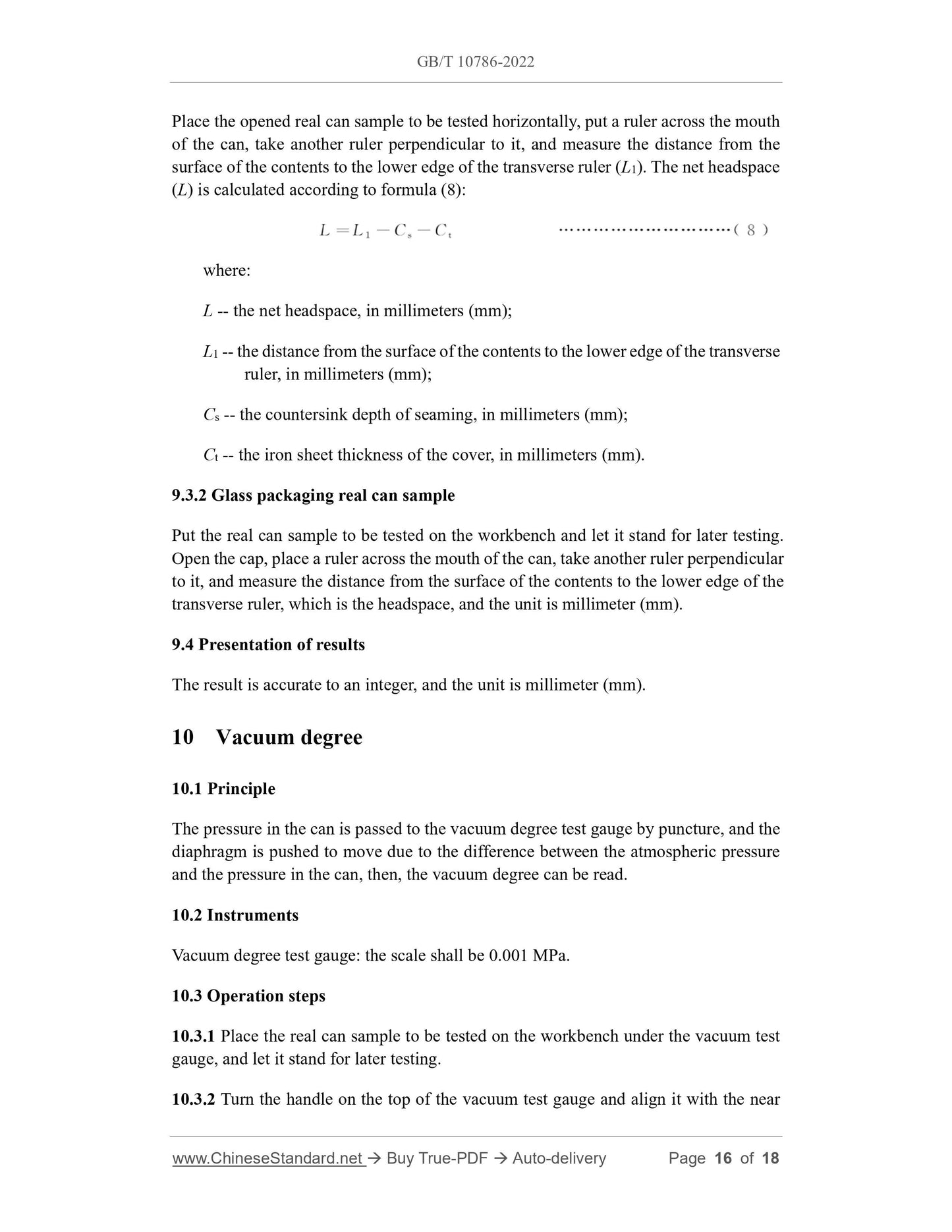1
/
of
10
www.ChineseStandard.us -- Field Test Asia Pte. Ltd.
GB/T 10786-2022 English PDF (GB/T10786-2022)
GB/T 10786-2022 English PDF (GB/T10786-2022)
Regular price
$225.00
Regular price
Sale price
$225.00
Unit price
/
per
Shipping calculated at checkout.
Couldn't load pickup availability
GB/T 10786-2022: Test methods of canned foods
Delivery: 9 seconds. Download (and Email) true-PDF + Invoice.Get Quotation: Click GB/T 10786-2022 (Self-service in 1-minute)
Newer / historical versions: GB/T 10786-2022
Preview True-PDF
Scope
This document describes methods for testing canned foods for organoleptic quality,soluble solids, net and solids content, pH, dry matter, headspace, and vacuum degree.
This document is applicable to the inspection of canned food.
Basic Data
| Standard ID | GB/T 10786-2022 (GB/T10786-2022) |
| Description (Translated English) | Test methods of canned foods |
| Sector / Industry | National Standard (Recommended) |
| Classification of Chinese Standard | X70 |
| Classification of International Standard | 67.040 |
| Word Count Estimation | 14,139 |
| Date of Issue | 2022-10-14 |
| Date of Implementation | 2023-05-01 |
| Older Standard (superseded by this standard) | GB/T 10786-2006 |
| Issuing agency(ies) | State Administration for Market Regulation, China National Standardization Administration |
Share
